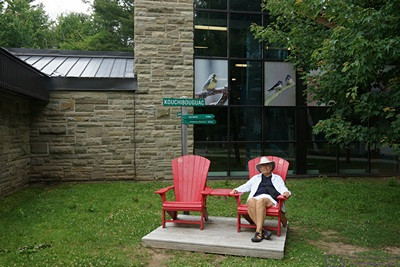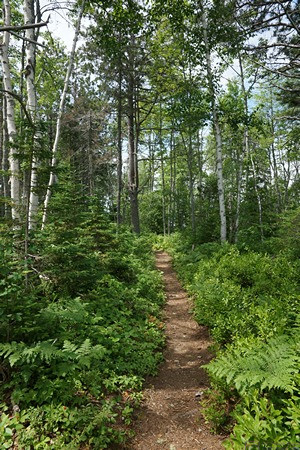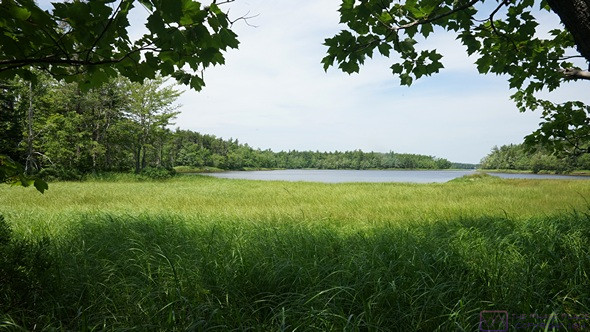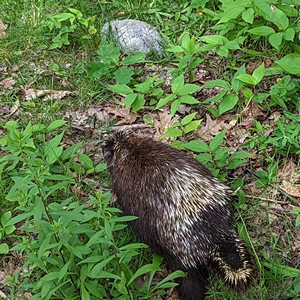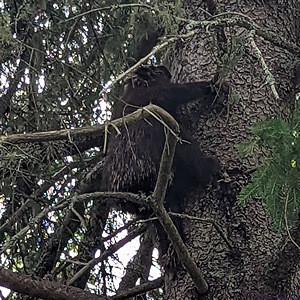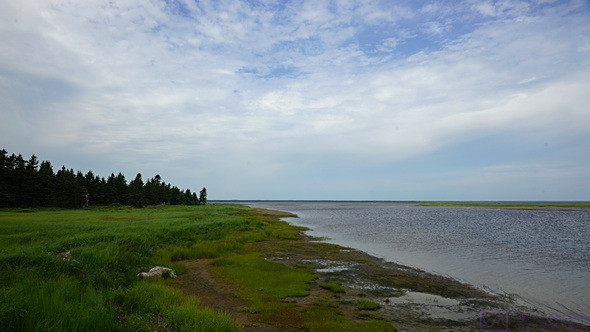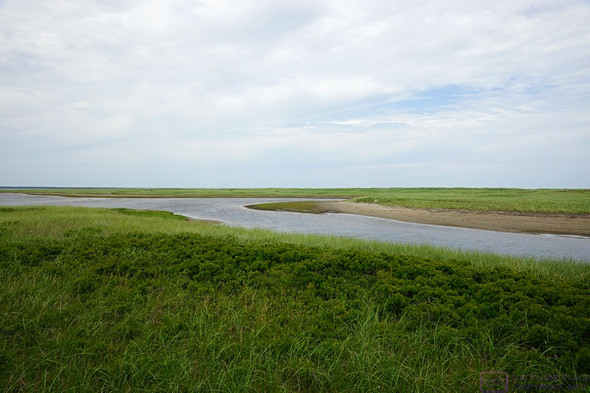TUESDAY 12 July
(dans le respect de Bill Bryson)
National Parks, whether in the U.S.A., Canada, or elsewhere in the world, are special places that have been set aside to protect and preserve areas and things that are unique and important. Some offer places of historic and cultural significance, while others offer grand views, sweeping vistas, or put the power of nature on display in the form of mountains, raging rivers, waterfalls, volcanoes, lakes and oceans. Some protect habitat for rare or endangered flora and fauna, while others protect more subtle places, such as prairies, tundra, and quiet woodlands. And most of them balance their protection and preservation mission with maintaining access for people to experience, enjoy, and learn from them.
Today we visited our second Parks Canada location of the trip, Kouchibouguac National Park (and got to use our Parks Canada annual pass). We went without Paul and Nancy as they had to attend to some other business. The forecast high temperature was 80 deg F, with constant winds out of the west of 20 mph. We could not leave the windows open in the Airstream so we set the main heat pump to cool before we left.
We are camped on the northeast coast of the New Brunswick, towards the southern end of the Acadian cultural region of the province. Since we took Highways 11 and 8 yesterday to get here, we decide to take smaller coastal roads to the park. This kept us in sight of water, on bridges over numerous rivers, and through the villages of Rexton, Richibucto, and Saint-Louis-de-Kent (birthplace of the Acadian flag).
The national park occupies the area on either side of the Kouchibouguacis River, the First Nation meaning of which is “long tidal river.” It’s an apt name, but the park also has a long coastline on the Gulf of St. Lawrence. It has extensive hiking, biking, and multi-use trails, as well as a beach area, and several campgrounds. It was also an obviously excellent place to use a canoe or kayak.
We went there to see it, of course, but especially to hike. After stopping at the Visitor Center, our main hike for the day was the Osprey Trail and spur to Black Point, far up the road on the northeast side of the river. Changes in elevation were relatively minor, which made for an easy, but great, hike over the 5.3 Km distance. It was essentially a quiet walk in the woods, although water was often in sight through the trees, and the trail occasionally went close to the shore.
PHOTO – 300x300_porcupine-(L)
By the end of the hike, we were a bit thirsty and hungry. The only food available in the park was at the Kelly Beach area at the far end of the road the runs up the southeast side of the river and begins at the aforementioned visitor center. It was a nice drive to get there, and we made note of the turn-offs and parking areas for several shorter hikes we want to do with Paul and Nancy tomorrow.
We got a couple of beverages and an order of French fries at the snack bar and while we were enjoying those, a porcupine made an appearance.
We then walked out the boardwalk to the Gulf, stopping to admire the scenery, feel the wind (steady at over 20 mph), and try to capture images of some of it.
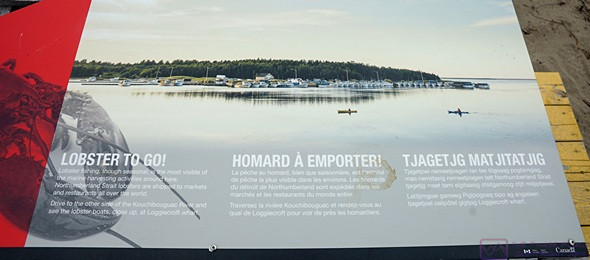
Signs in three languages. We were used to English and French, but the signs here also include the local First Nation language.
We returned to camp via NB-134, part of which we had driven on the way to the park. It’s a slower, curvier, bumpier road that Hwy 11, but more scenic.
Back at camp, the trailer was warm inside, but not uncomfortable. We tried opening some windows but the winds were still too strong so we left the air-conditioning running. I started off-loading and processing photos from the park while Linda began preparing sweet and sour tofu with brown rice for dinner.
Paul and Nancy came down around 6 PM and brought wine. The “Bodacious White” (Niagara, ON) was to our liking, a “smooth, fruit-forward …” style (according to the label). Basically, a touch of sweet and low acidity that seemed to pair well with the main dish. After dinner, we sat outside and talked for a bit before they returned to their rig as it was much too windy to have a campfire.
We were getting ready to retire for the evening when we realized we had no shorewater. Whatever the issue, it was quickly resolved. Our fresh water tank was still at 38% (about 15 gallons), enough to meet our most basic needs for the next 36 hours. Still, the brief outage served as a reminder that we need to keep our on-board water supply at or above 50% of the tank capacity at all times. 100% would be even better, except for the added weight when traveling.
The moon was full tonight, but I did not bring a tripod on this trip and so I was unable to photograph it.
…
